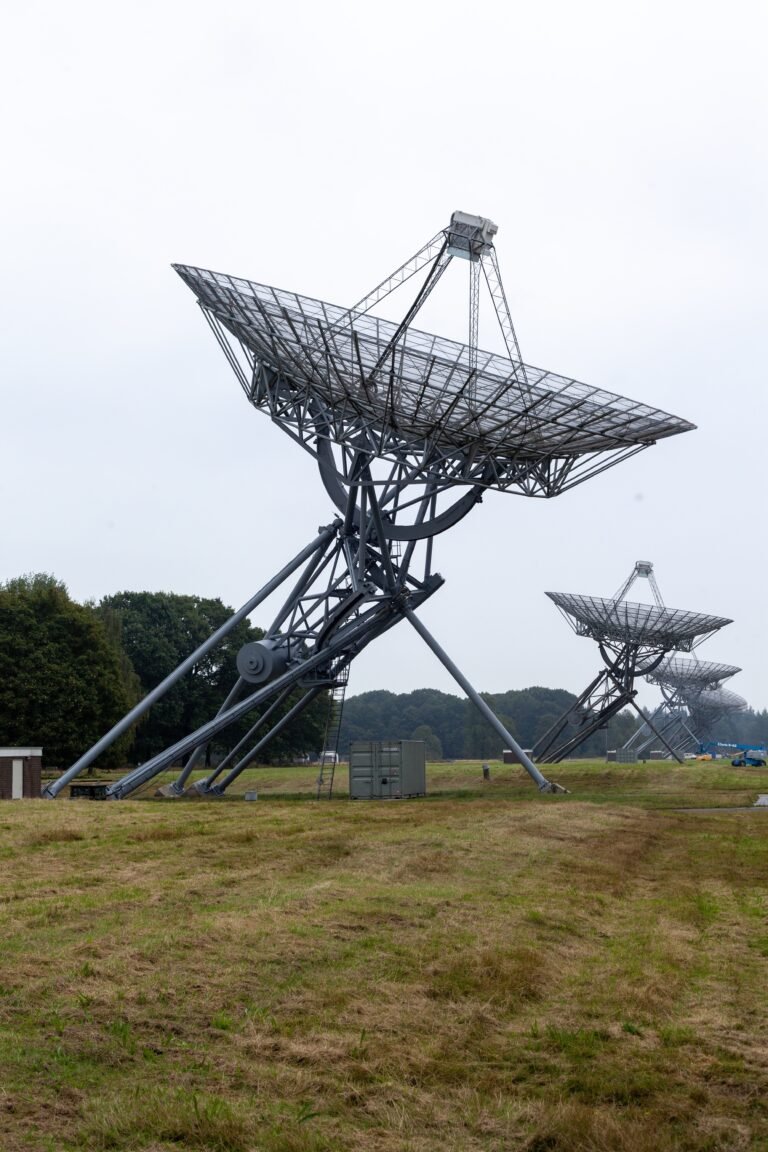Starlink, OneWeb, Kuiper: 2025’s Space Internet Showdown

Space-based internet has moved fast from science fiction to a real, competitive market where billion-dollar companies race to blanket the globe in connectivity. In 2025 the three names everyone watches are Starlink (SpaceX), OneWeb, and Project Kuiper (Amazon) — each with different technical approaches, business models, and timelines. This article breaks down their constellation status, performance, pricing, regulatory hurdles, strengths and weaknesses, and which users or regions are the best fit for each service. You’ll get technical comparisons, practical buying tips, industry context, and clear takeaways for consumers, enterprises, and investors.

How the three players differ at a glance
Before we dive deeper, here’s a quick snapshot of the three contenders.
| Service | Owner | Constellation scale (target) | Deployment status (2025) | Primary market focus |
|---|---|---|---|---|
| Starlink | SpaceX | ~12,000 planned (phased) | Operational with several thousand satellites in LEO; largest live network. | Consumer broadband, maritime, aviation, government, backhaul. |
| OneWeb | OneWeb (Bharti, Eutelsat partners) | ~648 initially / expansions via partners | Operational with polar-oriented constellation serving high latitudes & enterprise markets. | Governments, enterprises, remote communities, mobility. |
| Project Kuiper | Amazon | 3,236 planned (phase 1) | Began production satellite launches in 2025; early deployment under way. | Consumer broadband, AWS integration, enterprise & retail bundles. |
The raw numbers: how many satellites, and who’s ahead?
Starlink has the largest live deployment and has been launching at the fastest cadence — by mid-2025 the constellation numbered in the multiple thousands, making it the dominant commercial LEO broadband network. Space
Amazon’s Project Kuiper moved from prototypes to production launches in 2025: Amazon reported the first sizable production launch campaign in April 2025 and by late 2025 had passed the 100-satellite mark as it scales toward an eventual ~3,236-satellite constellation. About Amazon
OneWeb’s architecture is smaller (initially ~648 satellites for global coverage of certain latitudes) and launched earlier with Airbus as a manufacturer; OneWeb focuses on polar and high-latitude coverage and has secured partnerships with multiple operators to expand reach and capacity. EO Portal
Architecture & tech differences that matter
The three networks differ in orbital plans, inter-satellite links, and terminal tech — and those choices affect latency, throughput, and how they sell services.
- Starlink: Many satellites in mid-inclination LEO (~550 km for its bulk), a mix of optical inter-satellite links on later generations, and very high launch cadence using SpaceX’s Falcon 9 reusable rockets. This density and launch frequency give Starlink low latency and high aggregate capacity in many regions. Space
- OneWeb: Fewer satellites at higher inclinations with a design optimized for high-latitude continuous coverage (polar or near-polar orbits). OneWeb historically relied more on ground station interconnects and partnerships for global backbone, focusing on enterprise and government use where guaranteed coverage at high latitudes matters. EO Portal
- Kuiper: Planned three-shell constellation with optical inter-satellite links (OISL) and close integration with AWS for edge/cloud services — Kuiper aims to tie satellite connectivity directly into Amazon’s cloud and retail ecosystem, which could be a differentiator for enterprise/cloud workloads and IoT. Initial production launches began in 2025. About Amazon
Performance snapshot: speeds, latency and user experience
Real-world performance depends on constellation density where you sit, the customer terminal, local regulatory constraints, and network priority settings. As of 2025:
- Starlink has reported median peak-hour latencies in many markets in the mid-20s of milliseconds, delivering responsive broadband suitable for gaming, video calls, and many business applications. That low latency is a product of its LEO altitude, satellite density, and increasingly, inter-satellite laser links in newer generations. Starlink+1
- OneWeb typically shows slightly higher latency than Starlink due to different orbital choices and fewer satellites, but provides solid, resilient connectivity for enterprise and government functions — especially in high-latitude and maritime use cases when partnered hardware and ground infrastructure are in place. EO Portal
- Kuiper: Performance commercial figures were still emerging in 2025 with early production satellites in orbit. Kuiper’s design targets comparable LEO latencies and high throughput, and Amazon’s plan to integrate with AWS suggests a focus on low-jitter, cloud-native performance for enterprise customers. About Amazon
Pricing, packages and who pays what
Pricing models differ: monthly residential plans, enterprise SLAs, specialized mobility/marine plans, and wholesale/backhaul deals.
- Starlink: Widely recognized for offering consumer and specialized plans (residential, RV, maritime, aviation, and government). Pricing varies by plan and region and Starlink has used promotions (e.g., equipment included with a 12-month commitment in select markets) to grow subscriber base. Starlink
- OneWeb: Less consumer-focused historically; OneWeb’s direct retail pricing is limited in many places. Instead OneWeb often sells capacity to partners (telcos, governments, maritime providers) with enterprise/wholesale pricing and SLAs. EO Portal
- Kuiper: Amazon’s pricing approach aims to compete in consumer and enterprise markets; specifics evolved as Kuiper moved into production, but Amazon’s AWS bundling and retail channels could allow diverse pricing strategies (from consumer devices sold via Amazon to AWS-integrated enterprise offerings). About Amazon
Business models & go-to-market strategies
Each operator pursues a distinct path to capture market share:
- Starlink uses direct retail, aggressive launch cadence, and vertical integration (SpaceX builds and launches its satellites). It serves consumers, government, and mobility customers and also supports military contracts. Space
- OneWeb relies on partnerships (telecom operators, satellite operators like Eutelsat, and government contracts) and sells wholesale capacity for enterprise/maritime/aviation rather than a pure direct-to-consumer play in many regions. SatNews
- Kuiper leverages Amazon’s massive retail, logistics, and AWS cloud ecosystem to bundle hardware and services and to sell connectivity + cloud at scale. Amazon’s emphasis is on cloud-native workloads, enterprise edge integration, and a broad retail distribution for terminals. About Amazon
Regulatory, spectrum and geopolitical hurdles
Space internet isn’t just engineering — it’s regulatory and geopolitical chess.
- Licensing (spectrum and orbital) varies by country; Starlink has aggressively applied for licenses worldwide, Kuiper required approvals and launch coordination for its phased deployment, and OneWeb similarly secured regional agreements and partnerships. Regulatory obstacles or protectionist procurement policies can slow or limit availability in certain countries. Starlink
- Space assets draw national security scrutiny. Governments evaluate whether to rely on foreign satellite constellations for critical infrastructure — that often drives multi-vendor strategies (e.g., governments contract more than one provider to avoid single-supplier risk). Media and analysts have also flagged strategic concentration in launch and satellite manufacturing as a geopolitical factor. WIRED
Who wins which use cases? (Practical guidance)
Here’s a practical breakdown to help consumers, enterprises and governments decide:
- Rural homes & small businesses: Starlink is typically the fastest path to residential LEO internet in many regions because of its widespread deployment and consumer focus. (Cost considerations still apply.) Space
- High-latitudes (Arctic/Antarctic) & Polar routes: OneWeb’s orbital architecture makes it especially suitable for consistent coverage at higher latitudes. EO Portal
- AWS-centric enterprises & cloud edge: Kuiper’s value is its planned deep integration with AWS and the potential for cloud-native managed connectivity — great for enterprises that want drop-in AWS connectivity and managed SLAs. About Amazon
- Maritime & aviation: All three are pursuing mobility, but Starlink’s early mover advantage has resulted in several maritime and aviation partnerships and trials; OneWeb also pushes into aviation and maritime through OEM and operator partners. Kuiper is gearing up to compete as it scales. Space
Practical buying tips & tricks (how to pick)
- Check local availability first — even if the constellation exists, regulatory approval and terminals may not be available in your country yet. (Starlink’s availability map and Kuiper/OneWeb partner announcements are good first stops.) Starlink
- Match SLAs to needs — if you’re an enterprise or critical user, don’t buy consumer plans; ask providers for SLA, uptime and support commitments.
- Consider a multi-vendor approach — businesses with mission-critical connectivity often contract multiple providers to avoid single points of failure. WIRED
- Watch bundling offers — Kuiper may offer AWS bundles that lower total cost for cloud-dependent workloads; Starlink occasionally offers promotional deals that reduce hardware costs. Starlink
- Evaluate terminal setup & power needs — maritime and remote deployments have additional hardware and power considerations; ask for ruggedized terminals and certified vendor install partners.
Comparison table — quick technical snapshot
| Metric | Starlink | OneWeb | Project Kuiper |
|---|---|---|---|
| Reported active satellites (mid-2025) | Several thousand (largest live network). Space+1 | Hundreds (initial design ~648; expansion via partners). EO Portal | Production launches started in 2025; >100 launched by mid-late 2025; target 3,236 for Phase 1. About Amazon |
| Typical latency | Mid-20s ms median (peak-hour in many regions) — good for gaming/VoIP. Starlink | Slightly higher typical latency due to orbital choices; enterprise-grade reliability. EO Portal | Targeting LEO latencies comparable to Starlink; commercial numbers emerging as deployment continues. About Amazon |
| Primary business model | Direct retail + enterprise + gov + mobility. Starlink+1 | Wholesale/partnered capacity + gov/enterprise focus. EO Portal | Retail + AWS integration + enterprise; retail distribution via Amazon. About Amazon |
| Inter-satellite links | Deployed on newer gens; ongoing rollout. Space | Historically ground-station reliant; partnerships extend backbone. EO Portal | Designed with optical inter-satellite links and AWS ground station integration. Wikipedia |
Industry & investment perspective (why investors and telcos care)
LEO broadband is a large addressable market — analysts cite opportunities worth tens to hundreds of billions across consumer broadband, telco backhaul, maritime/aviation, and defense. The winner(s) will be those who marry spectrum and orbital rights, reliable terminals, strong partnerships, and cost-effective launch logistics. SpaceX’s vertical integration and launch advantage have given Starlink an early lead; Amazon and OneWeb counter with cloud/partner strategies and focused niche coverage respectively. MarketWatch
Risks & open questions through 2026
- Space debris & astronomy impact: Large constellations raise concerns for astronomers and orbital sustainability; operators are tweaking satellite brightness and de-orbiting plans to mitigate effects. Starlink
- Regulatory slowdowns: Country-by-country approvals, import restrictions on terminals, and government procurement rules can create patchy availability. Starlink
- Market price pressure: Competition may drive down prices for consumers; enterprise margins and wholesale deals will determine long-term sustainability. MarketWatch
- Launch & manufacturing scale: Kuiper’s rapid scale-up and OneWeb’s manufacturing partnerships will test throughput and supply chains in 2025–2026. About Amazon
FAQs (5–7 questions)
Q1: Is Starlink always the fastest choice?
A: Not always. Starlink often provides the most immediate consumer availability and low latencies in many regions, but OneWeb can outperform in polar regions and enterprise contexts where they have dedicated ground infrastructure; Kuiper aims to be competitive as it scales. Space+2EO Portal
Q2: Are these services available in Pakistan?
A: Availability is region and regulatory dependent. Providers announce country launches and licensing progress periodically; always check each provider’s regional availability map and local telecom regulator announcements. Starlink
Q3: Can I use these services for gaming or remote work?
A: LEO providers like Starlink report low latencies (mid-20s ms in many markets) that support gaming and real-time collaboration; performance varies by location and network load. Starlink
Q4: Which is best for maritime or aviation?
A: Starlink has taken early commercial steps into maritime and aviation with trials and partnerships; OneWeb and Kuiper are pursuing mobility use cases too, often via partner OEMs. Choose based on SLA needs and terminal compatibility. Space
Q5: How soon will prices drop?
A: Competition and economies of scale typically drive prices down over time. Kuiper’s retail distribution and OneWeb’s partner deals may exert downward pressure on consumer prices, but hardware costs, ROIC, and regulation will influence timing. MarketWatch
Q6: Is there a single winner?
A: Unlikely in the short term. Different architectures and go-to-market strategies point toward segmentation: Starlink for rapid mass consumer adoption, OneWeb for high-latitude & partner wholesale, and Kuiper for cloud-integrated enterprise and retail bundles.
Conclusion — who takes the crown in 2025?
There’s no single “winner” in 2025 — Starlink leads by deployment and active user footprint, Kuiper is emerging fast with Amazon’s cloud and retail muscle, and OneWeb holds niches in polar and partner-driven enterprise markets. For consumers, availability and local performance are the deciding factors; for enterprises and governments, SLAs, regulatory approval, and vendor relationships will matter more. Over the next 12–24 months watch for Kuiper’s ramp, OneWeb’s capacity partnerships (e.g., with Eutelsat), and how Starlink continues to monetize scale — those moves will shape the market structure through 2026 and beyond. Space+2





